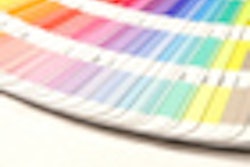
A single set of color difference standards is unlikely to work in dental prosthesis fabrication, so practitioners may need to take factors such as skin and gingival color into account, the authors of a new study in the Journal of Dental Research contend (November 2010, Vol. 89:11, pp.1254-1258).
Delwin Lindsey, Ph.D., a professor of psychology at Ohio State University, and his colleague decided to conduct the study when they noticed a lot of disagreement in the literature about how sensitive people are to tooth color differences.
"Dentists and patients are often unhappy with color," Lindsey told DrBicuspid.com. "We wanted to get an estimate of how small a color difference can be between the tooth and the prosthetic so the patient is happy."
— R. Douglas Duane, D.M.D.
The researchers tested the hypothesis that differences in skin and gingival color influence individuals' judgments of tooth color differences.
They determined perceptibility and acceptability thresholds in 10 individuals who evaluated 500 pseudorandom presentations of two facial portraits: an African-American and a Caucasian. These portraits varied trial to trial only in the direction (CIELAB +L*, +a*, +b* -- the most complete color space specified by the International Commission on Illumination) or magnitude of the color difference between a portrait's two central incisors.
"The individuals were significantly less sensitive to tooth color differences in the +L* direction in the Caucasian portrait than for any other combination of color direction or portrait type," the authors concluded. "Furthermore, comparable perceptibility and acceptability thresholds were generally not statistically significant from each other."
A matter of perception
Most of the research done on this topic has found that even if individuals perceive a color difference, they may find it acceptable, Lindsey said.
"We found that any perception differences are not acceptable," he added.
Perception of color difference depends on many factors apart from the color of the teeth and includes variants such as gingival color, staining, and translucency, Lindsey explained.
The large dependence of +L* sensitivities on portrait type in the present study is an important new finding because it provides compelling evidence that a single absolute set of color difference standards in prosthesis fabrication is unlikely to work, the authors noted in the study. Standards may need to take into account skin (as well as gingival) color, unless very stringent standards are adopted, which could render individual context-dependent differences moot.
This is the first study to use computer simulation as a way of analyzing data, Lindsey added.
The researchers used full-face portraits presented on a computer color display that allowed the participants to make color judgments approximately in situ. The advantage of this method is that the participants were influenced by a variety of psychological and perceptual factors that may govern such judgments in real-life settings, they noted.
These study results can help in setting new industry standards for color matching, and computer simulation can be used in further studies on this topic, Lindsey said.
2D vs. 3D
While this is a well-designed study, noted R. Douglas Duane, D.M.D., an associate professor and chair of the department of restorative dentistry at the Southern Illinois University School of Dental Medicine who has done similar research (Journal of Prosthetic Dentistry, April 2007, Vol. 97:4, pp. 200-208), "it is important to be careful not to draw conclusions that are generalized to a clinical scenario from a benchtop study/survey that claims to be clinical because it uses pictures."
Dr. Duane agreed that many factors affect the color perception of an individual and certainly the surrounding environment (skin tone) could affect perception, but looking at pictures cannot simulate the responses of an observer in a real-life situation, he pointed out.
"Pictures are two dimensional and do not demonstrate translucency, fluorescence, etc.," Dr. Duane explained. "An individual cannot look at the tooth in a picture from varying angles and distances as one would in a dental chair."
Also, although the authors report that they do not find a difference between thresholds for perceptibility and acceptability, the research does not demonstrate that when an individual sees a color difference it is automatically unacceptable, he noted.
Dr. Duane felt that the individuals in this study were perhaps more critical than they would be in a live clinical scenario, despite their claims that the methodology prevented bias.
"In the field of dentistry, we know that as practitioners and as patients we will see a color difference between a tooth and a restoration but may accept that difference as being as close as we can get when using dissimilar materials (tooth and ceramic)," he said. "I can tell you from experience that the average layperson will accept a much larger color difference than is perceptible by a trained dentist."
Copyright © 2010 DrBicuspid.com



















